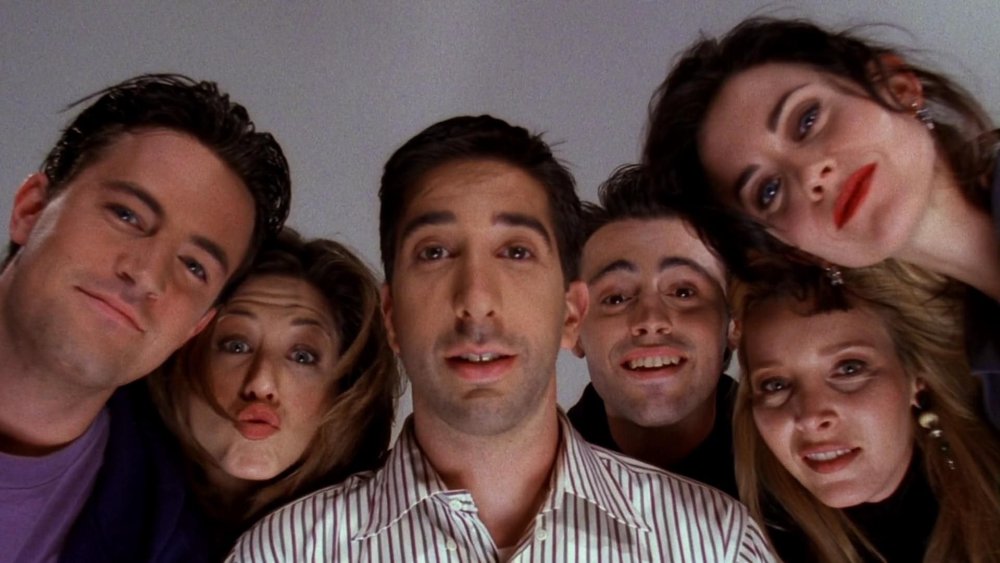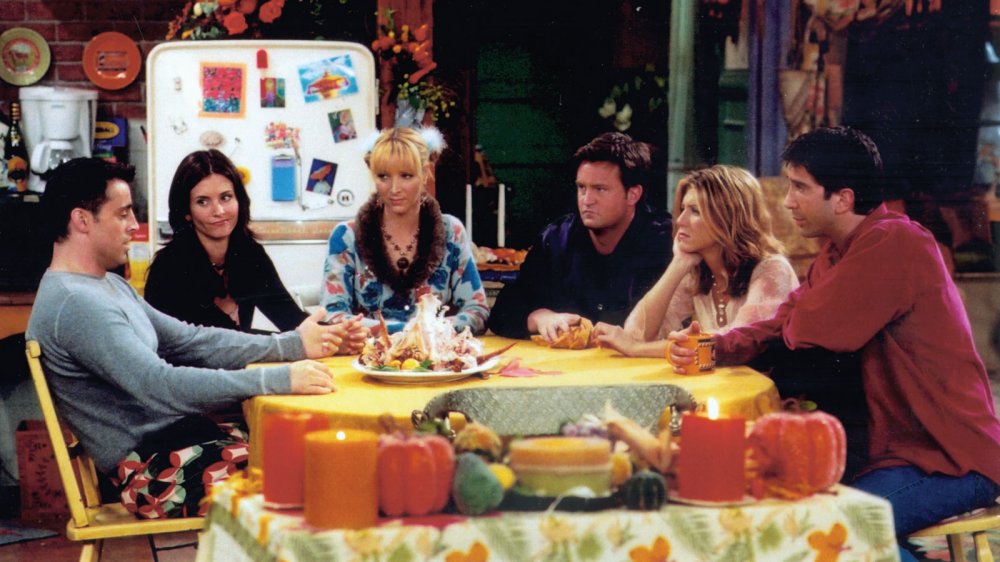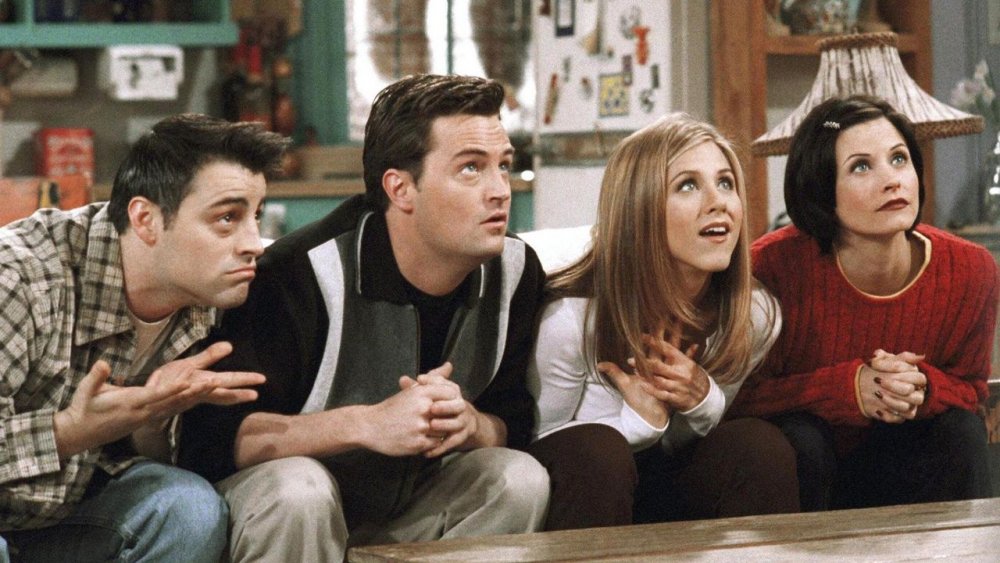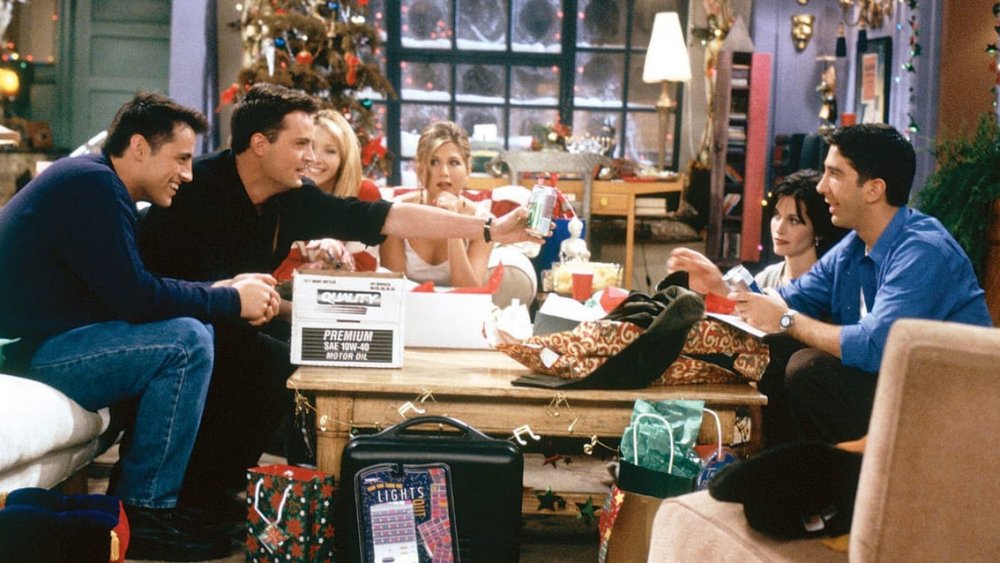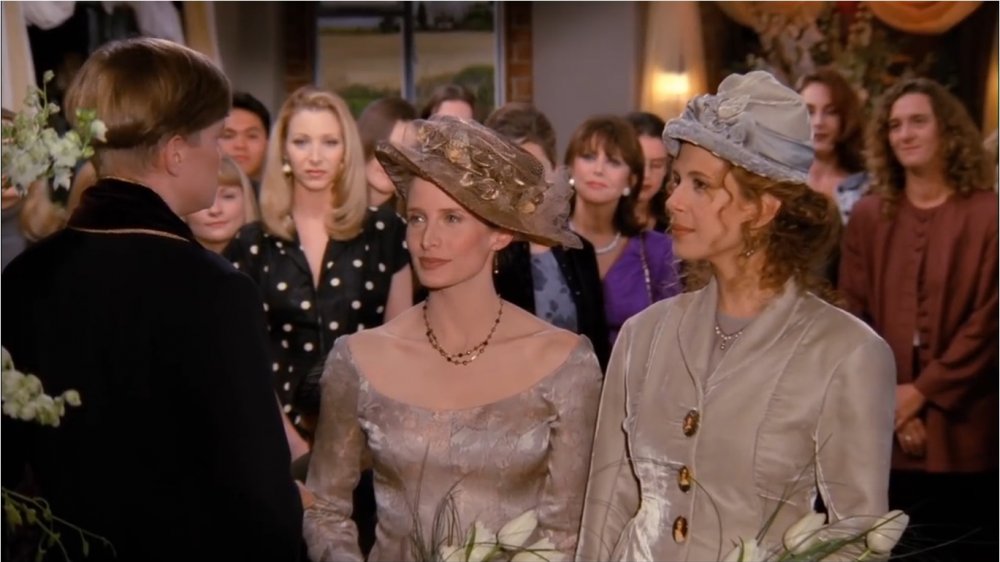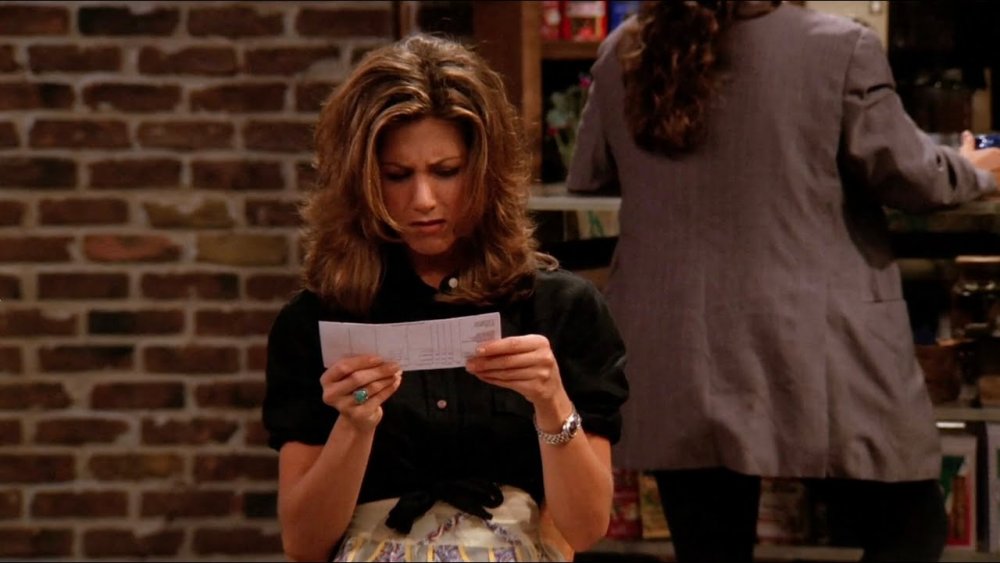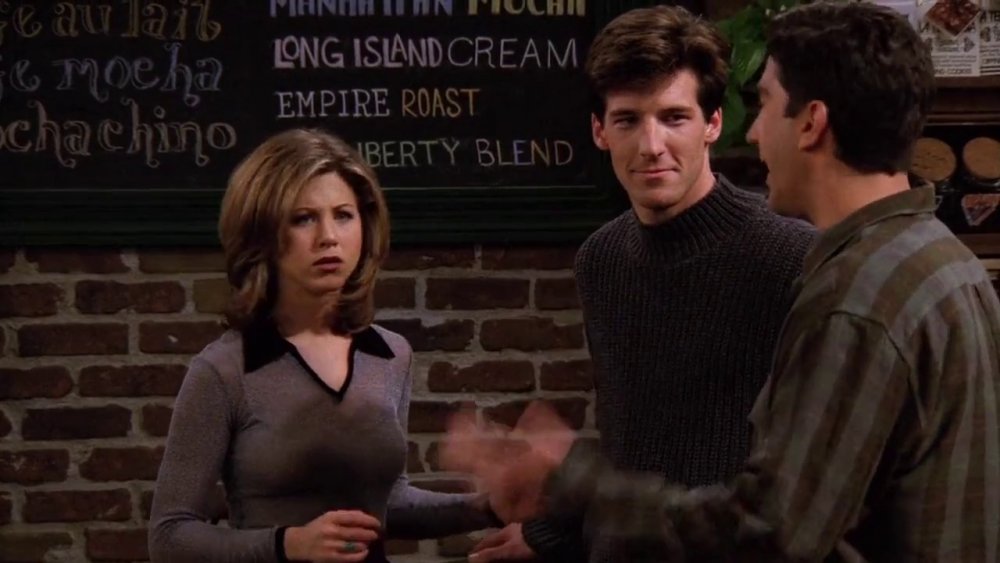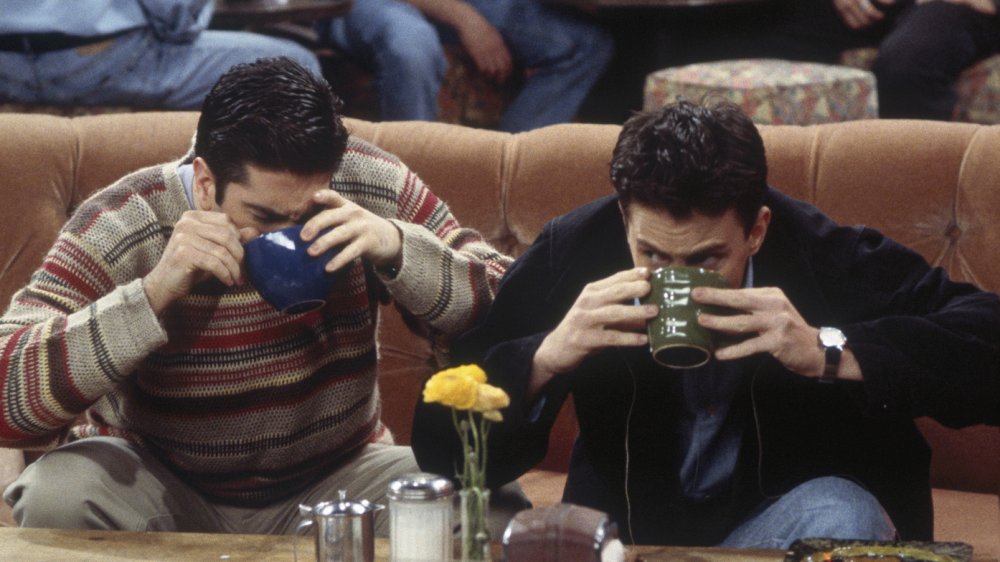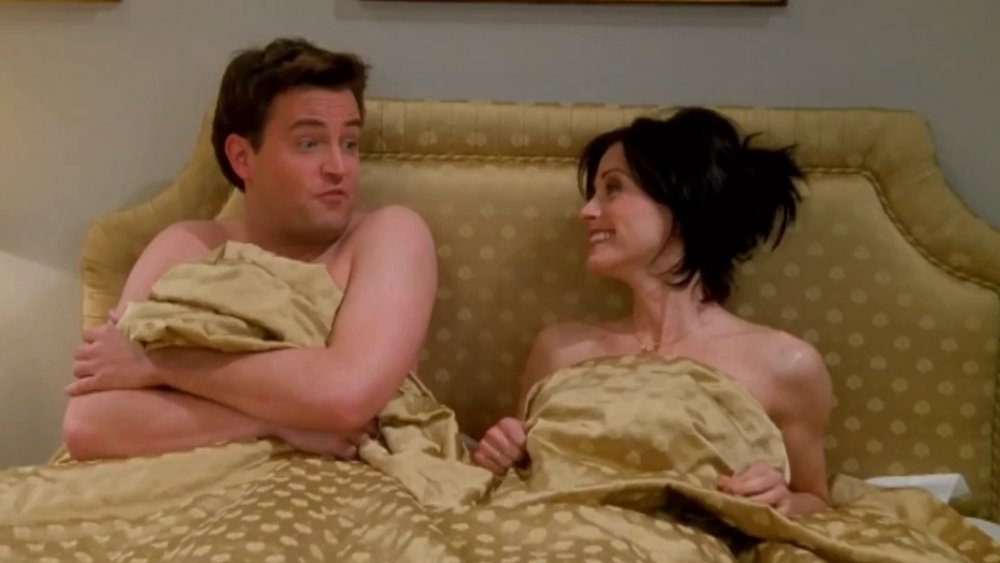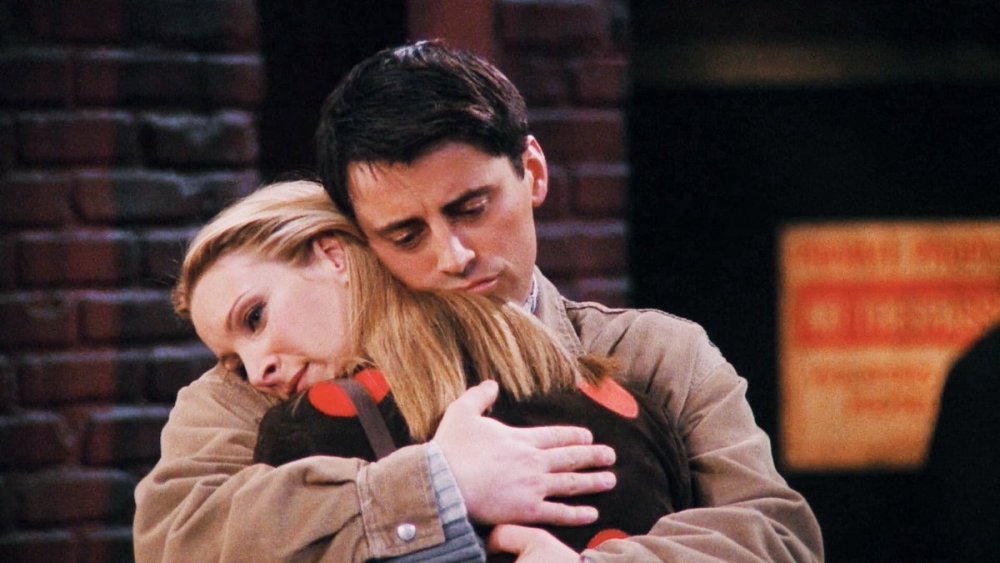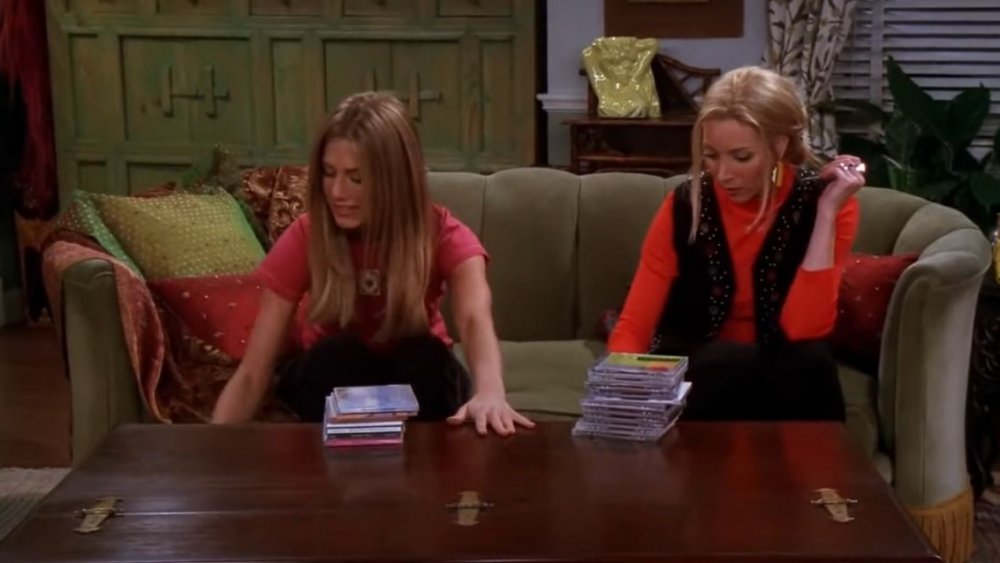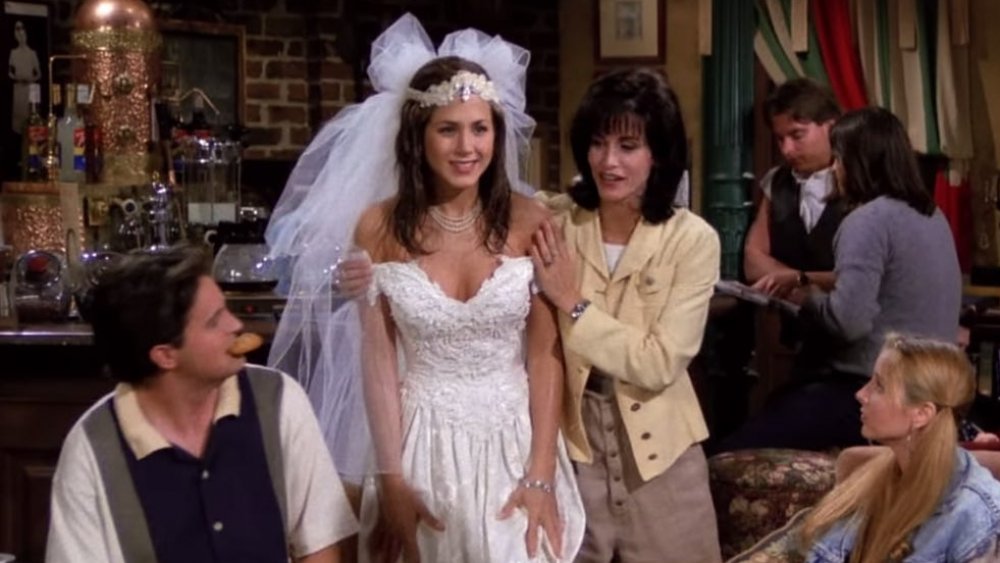How Friends Changed TV And No One Noticed
On September 22, 1994, audiences tuned in to NBC to watch six 20-something New Yorkers discuss their love lives and job woes on an orangey brown couch in a coffee shop, little knowing that this was the start of a brand new chapter in TV history.
That first episode of Friends drew 22 million viewers and respectable reviews. One decade, ten seasons, and many emotional ups and downs later, the finale aired to 52 million viewers, making it the third most-watched finale episode of a series ever at that point.
Friends affected its viewers in a way that few shows manage. It became both a treasure trove of cultural reference points that still get appreciative chuckles today and something people put on like a familiar, old Frankie Says Relax T-shirt. This effect increased when the show went into syndication and then DVD boxsets, all before finding a new audience (primarily teenagers) thanks to a run on Netflix that lasted from 2015 to 2020. The show has had a lasting impact on what we expect from TV and how it gets made. Here's how Friends changed TV and no one noticed.
Friends focused on friendships instead of romance or career
Before Friends, most comedies were based around couples or colleagues (or both). For example, The Dick Van Dyke Show flitted between Rob Petrie's (Dick Van Dyke) work and home life. Happy Days spinoff Mork & Mindy told the love story of alien Mork (Robin Williams) and his human roommate-turned-wife Mindy (Pam Dawber). And Friends' unofficial sister show, Mad About You, centered on yuppie married couple Paul (Paul Reiser) and Jamie (Helen Hunt). Meanwhile, shows like Murphy Brown, M*A*S*H, and Frasier were workplace comedies where the main non-family relationships were between colleagues.
Granted, the friends in Friends had their fair share of romances. According to Netflix, Monica (Courtney Cox) was the most popular, dating ten people, while her future husband, Chandler (Matthew Perry), came last with four. Despite this, Monica spent much of the early seasons lamenting not having a boyfriend. Plus, the friends did, sometimes, go to their various jobs. But their careers and dating life only drew the spotlight when they involved each other, such as when Joey (Matt LeBlanc) became a waiter in Monica's restaurant or when Rachel (Jennifer Aniston) dated Ross' (David Schwimmer) girlfriend's father (played by Bruce Willis.) As the theme song said, it didn't matter if their job was a joke or their love life was D.O.A. because the main relationships in the series were between the friends. This paved the way for friend-centric shows like How I Met Your Mother, Community, and The Big Bang Theory.
The friendship group included men and women
Before Friends, other comedy shows that focused on friendship groups were usually about people of the same gender. For example, Happy Days was mostly about a gang of guys, squeezing in the occasional love interest or sister. Golden Girls, which aired from 1985 to 1992, was about four older women living together in Florida. Sex and the City and Girlfriends, which both started after Friends, followed 20-something women in New York. Living Single — which preceded Friends by one year and directly inspired the show — did include two men in the friendship group, but it was mainly about four women. And Seinfeld added a token female character who acted like the men she hung around with.
By creating a mixed gender group that included platonic friendships, Friends had the chance to play around with a different set of dynamics. There was leeway to experiment with various pairs and trios. This is how we ended up with Phoebe (Lisa Kudrow) and Joey, arguably the most entertaining duo, and with Monica and Chandler's romance. But there was also space for the three men to do "Manly Friendship Things" and for the women to do "Girly Friendship Things." For example, there was the time when Joey, Chandler, and Ross went to a hockey game or when Rachel, Monica, and Phoebe accidentally caused a fire while burning their exes' belongings on Valentine's Day. The show proved that the more gender diverse the group, the more varied the relationships and opportunities for comedy.
Friends showed a new vision of family
The classic sitcom set-up has always been to start with a family of strong personalities — usually headed by heterosexual maried parents — and throw various problems into the mix. See, for example, The Cosby Show, Roseanne, Family Matters, Malcolm in the Middle, and Black-ish, to name just a few. In these shows, the oldest child is usually still a teenager — at least until the actor ages out — and still living at home, meaning their relationship with their parents is still paramount.
Friends and other shows like it (New Girl, The Big Bang Theory, Girls) put the spotlight on the next stage of life, after you've moved away from your family and before starting your own. In their original pitch, David Crane and Marta Kauffman wrote (via BBC), "It's about friendship because when you're single and in the city, your friends are your family."
Having people your own age become that unconditional support system also brings more freedom. Your family doesn't want to hear about your latest hook-up or problems with your boss, but your friends do. This allows for more entertaining, less PG-13 storylines, and ones that the audience at that time could relate to. The series ends when new parents Monica and Chandler move to the suburbs with their babies, marking the transition from the 20-something definition of family to the next stage.
It showed a 'controversial' same-sex wedding
Friends wasn't the first comedy show to air a same-sex wedding. That happened in Roc in October 1991. But in January 1996, when "The One with the Lesbian Wedding" aired, a wedding between two women was still considered controversial.
In 2019, Jane Sibbett, who played Carol (one of the brides), told The Guardian, "Certain affiliates wouldn't air the episode with our wedding." Specifically, it was KJAC-TV in Port Arthur, TX, and WLIO in Lima, OH. In 2017, Sibbett told Metro that she was disappointed that Friends deliberately skipped the part of the ceremony where Carol and Susan (Jessica Hecht) would have kissed.
Having a same-sex wedding in a show as big as Friends was a bold move at the time, and it proved that hit shows could embrace gay characters. However, the show was far from a beacon of gay rights, as there were many homophobic jokes in which being gay was the punchline.
Friends has also drawn retroactive ire for its portrayal of Chandler's "dad," a drag performer named Helena who may be transgender but is played by cisgender actress Kathleen Turner. Turner has since said that she would now prefer to have a transgender actress in the role, and Friends co-creator Marta Kauffman told USA Today in 2019 that if she could change anything about Friends, it would be the way they portrayed Helena.
The cast changed how actors negotiate for salaries
For season one, the six main actors were each paid $22,500 per episode (via Business Insider). But by season two, the Ross-and-Rachel craze had made Schwimmer and Aniston bigger draws, and they both got a pay bump to $40,000 an episode.
Before the third season, Schwimmer convinced the others to negotiate with him as a unit. He later told Vanity Fair, "I don't want to come to work feeling that there's going to be any kind of resentment. ... We're all going to be paid the same, for the same amount of work." That meant he and Aniston took an initial pay cut, but ultimately, that season they all collected $75,000 an episode.
By the last two seasons, the cast's salaries had gradually increased to what Kauffman called a "ridiculous" $1 million an episode each. And Friends is still earning them cash. In the negotiations for season six, they won two percent of the show's syndication profits — that's $20 million a year each, according to The Independent.
The cast of another show about a group of friends took note. The Big Bang Theory stars Jim Parsons, Johnny Galecki, and Kaley Cuoco all negotiated together, as did Simon Helberg and Kunal Nayyar, who were in a lower salary tier. From season eight, all five were earning $1 million per episode (and earned a percentage of the profits) — until they took a $100,000 pay cut per episode so series regulars Mayim Bialik and Melissa Rauch could get pay raises.
Friends changed the way we talk
Many shows have relied on catchphrases to earn them a spot in pop culture. For example, there was Steve Urkel's "did I do that?" in Family Matters and Hannibal's "I love it when a plan comes together" in The A-Team. Friends introduced a couple of its own catchphrases to the English-speaking world. Joey's "how you doin'?" and Janice's (Maggie Wheeler) "oh ... my... god!" are probably the two most enduring. Game of Thrones actress Emilia Clarke even asked Matt LeBlanc to say his famous line to her when they were both on The Graham Norton Show in 2016.
However, Friends' contributions went beyond repetitive phrases that everyone can trace back to the show. It introduced us to new concepts that escaped into the world and took on lives of their own. For example, the series popularized the idea of "the friend zone," "going commando," and being somebody's lobster. Even though each of these only appeared in one episode, they stuck with the audience, who took them away, started using them, and eventually forgot where they first heard them.
Memes and gifs have only made Friends more relevant and less contextualized. For example, a scene in which Phoebe tries to teach French to Joey word by word, only to have him completely botch the full sentence, is now a popular format for when someone just isn't grasping a concept.
Friends moved at a faster pace than other sitcoms
Spending so much time in a cafe that serves coffee in enormous mugs may explain how the Friends characters kept up the pace David Crane and Marta Kauffman were envisioning when they came up with Friends.
Basing a show around six equally important characters meant cramming more plot and lines into each 22-minute episode than was common in most multi-camera shows. And where older sitcoms like Frasier or I Love Lucy ran with elaborate jokes that made for long scenes, Friends mostly stuck with punchier scenes that often revolved around banter between the characters or short physical gags. This style has continued to influence other shows. For example, The Big Bang Theory, The Goldbergs, and How I Met Your Mother all jump between quick, short scenes and juggle multiple plots.
Even though the scenes were shorter, the cast wasn't cutting out early. Friends was notorious for taking much longer to tape than other sitcoms — six or seven hours or even more. If a joke didn't make the studio audience laugh, the writers would come up with a new one on the spot. Once they finished a take everyone was happy with, it took 20 minutes to change the set for the next scene.
It wasn't shy about sex
Although Friends found an audience with people much younger than the 20- and 30-somethings it starred, it dealt with adult topics more openly than other prime time series. There's the famous scene in which Monica uses an unseen diagram and a number system to explain to Chandler which buttons he needs to push to make his date happy in bed, a plot that revolves around Monica and Rachel fighting over the last condom in the apartment, and Ross explaining to Rachel — and Joey — that contraception is only effective 99 percent of the time with perfect usage.
Far from shaming the characters for dating around and having casual sex, Friends portrayed that as part of 20-something life, including for the women, which was even more unusual and helped normalize it in future shows like New Girl and The Mindy Project.
At least one person at NBC was uncomfortable with Friends' sexuality from the start. Kauffman told Vanity Fair that after reading the pilot, NBC West Coast president Don Ohlmeyer sent a note saying that audiences would think Monica was promiscuous because she slept with Paul the wine guy (John Allen Nelson) on their first date. He thought this would make her unlikeable. The network then had the studio audience fill out a survey that asked a loaded question about how the storyline made her come across. However, those early Friends viewers rallied around Monica, and the story — and much more casual sex — stayed in.
Friends walked the line between cheesy and dark
Many American sitcoms can't resist a "learning" moment at the end. After various hijinks and arguments big or small, the main characters finally reconcile in the final minutes, preferably with a cheesy monologue or voiceover. Modern Family and Scrubs are two prime examples of this, but you also see it to a more subtle degree in shows like Brooklyn Nine-Nine and The Office, especially when compared to its ruthless British equivalent.
Friends somehow managed to avoid falling into the cheese trap. This was partly thanks to the show's aesthetic. The characters had their dorky moments (Chandler and Ross in particular), but they were still supposed to be cool New Yorkers, and cool New Yorkers don't express emotion, much less pure joy and genuine affection. Even when the characters had a fight — for example, when Rachel and Monica fell out when Monica decided to move in with Chandler — the makeup moments balanced the characters' emotions with humor.
And while Friends has become the TV equivalent of comfort food, it did address some undeniably tricky topics. From the start, there was divorce, death of family members, suicide, cheating, parental abandonment, being fired, unplanned pregnancy, tension with parents, and infertility. Perhaps the show was sometimes too flippant with its subject matter, but watching characters deal with these struggles without leaning on the laid-on-like-buttercream saccharine sweetness other sitcoms resort to helped prove that shows don't have to be heavy handed to have an emotional impact.
It proved TV shows' appeal extended beyond the screens
The popularity of Friends didn't start and end with the tens of millions of people watching it when it aired every week. Cunning advertisers realized that the show's group of New York 20-somethings with seemingly endless disposable cash and aspirational lifestyles were the perfect people to sell products to unwitting audiences.
This is most obvious — and yet seamless — in the season six episode titled "The One with the Apothecary Table," in which Rachel buys an expensive table from Pottery Barn, then lies to Phoebe that it was from a flea market. It turned out that Warner Bros. made money from the nod while Pottery Barn has managed to wring out every dollar. Whenever the episode aired, the company saw brand awareness spike, and in 2019, it released a Friends line to honor the show's 25th anniversary, including mugs, a print of the fountain from the intro, and of course, the table.
Back in the '90s, it was more common to see merch for kids' shows, like Sesame Street lunchboxes or Star Wars action figures. But Friends has made the most of its adult fans' desire to express their affection for the show. From officially licensed T-shirts to pop-ups to LEGOs, Friends has proven that grown people are willing to pay to take their fandom from the screen to real life, even when those fandoms don't involve Jedi or superheroes.
Friends forced streaming services to get original
When streaming platforms like Netflix, Hulu, and Amazon Prime were the only big players in TV on demand, people mostly used them to watch existing series that they were hosting but didn't create. For example, analytics firm Jumpshot (via Vox) calculated that Netflix's most popular shows of 2018 were The Office (in first place) and Friends.
The popularity of these existing shows turned them into major weapons in the so-called streaming wars. According to Forbes, Netflix paid $100 million for the right to stream Friends in 2015, and three years later, it paid almost the same amount to keep it for the duration of 2019.
However, as networks like NBC, Disney, and HBO are now choosing to keep that old content for their own streaming services, platforms that got their starts streaming other studios' content are having to come up with their own shows and movies. But on the bright side, they also have more money to do it.
For example, in July 2019, WarnerMedia spent $500 million to bag Friends for streaming platform HBO Max, which launched in May 2020. But Netflix pointed out that this frees up more money to spend on their own originals, many of which have won not just viewers but award nominations and critical fanfare. As streaming services do battle over old titles, it may ultimately result in more original content for viewers — maybe even the next Friends.
